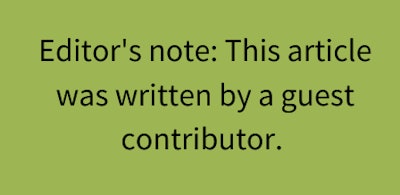
Can you confidently and accurately say that you are making the money you thought you would make from all of this hard work?
Maybe the answer is no and you feel like you are working hard, barely keeping up with the work at hand, and you cross your fingers that there will be money left over at the end of it all- because being this busy means you must be making good money, right?
Since I began working with trades entrepreneurs almost 10 years ago, I have seen this often. Most times, people are so busy being busy that they don’t take time to step out of the crazy and look at the health of the business. At Breakthrough Academy, we take members through a process to really get a handle on and ultimately maximize the profitability of their business- and yes, these changes can be made with a glass of cool lemonade in hand!
We are going to use the steps of a Coaching Cycle as our guide. Let’s dive in!
- The first step is to prepare. It is essential you define a clear profit goal and plan so that we can look at opportunities to monitor and maximize profit – particularly in the busy months of summer.
So, do you have a clearly defined profit goal?
It impossible to talk about maximizing profit if you don’t define at what level this profit should come in. Gross profitability (revenue less variable costs) is the easiest type of profitability to impact mid-year, so let’s focus on that.
If you don’t have a business budget, your first step is to build one. Start by determining what dollar amount of profit you want to make in net profit (total revenue less total expenses, including variable and fixed).
Open up a spreadsheet and start by playing with your revenues incoming and expenses outgoing to give you a profit goal. Our master business planning spreadsheet has a budget section designed specifically for budget planning and review.
Now that you have a budget to work with, you can use this gross profit goal on a job by job basis. For example, if you calculated a 30 percent gross profit will lead to you hitting your net profit goal, then estimate and measure progress for each job against 30 percent.
- Now that you have a clear profit goal and know where each job needs to come in at, you can pick some areas to focus on. This is the execution phase!
I recommend picking 1-2 critical metrics to impact and increase profitability.
Which metric(s) you choose will be different for each business, so think through the following: what metric would I want across my desk each morning that could give me insight into profit? Is it actual hours vs budgeted hours? Materials percentage? The charge rate being quoted? The production schedule? Number of deficiency call backs per job?
Once you determine a critical number relating to profitability, select a couple of tactics you could use to impact it. For example, if labor costs are a problem, give clear budgets to your teams for the overall job, as well as each part of the job. One way to do this is by having a project binder on site that outlines each stage in terms of scope of work and time allotted. This will give your team context and goals to keep them on track.
- Next, get feedback.
Now that you have profit goals and profit tactics for each project, you will need to monitor the ongoing profitability, project by project, on a regular rhythm (perhaps monthly for long term projects and weekly or biweekly for short term projects).
At Breakthrough Academy, we provide our members with a “job cost card” tool that allows them to update all incoming revenue and incurred costs on a per-project basis, in comparison with how these projects were estimated. This is the “feedback” you’ll need in order to make decisions that could affect your profitability on current and future projects. If you’d like to save some time, request a copy of our master business planning file to borrow our job cost card format.
This feedback gives critical insight into your business and should be shared with key staff that have leverage within the company; a project lead, for example. Business owners often only get insight into the job profitability when the job is complete, or perhaps have no pulse at all on job-by-job profits, but only on the overall company at year end. In the summer months when all crews are firing on all cylinders, it is critical to get regular insight into job actual costs vs planned costs so that you can adjust and maximize your profits.
- Now that you are measuring and getting feedback on your profit numbers, it is important to follow up on this information.
We follow up on the critical metrics and plans you made and adjust to maximize profitability. By using and reviewing BA job cost cards (or whatever job tracking program you use) and touching base with team members on what they think can be done differently, you can pinpoint areas of opportunity to make more profit.
Here are some key areas you may want to consider:
- Should I be charging more? If you are booking almost every bid, it may be a sign you are not charging enough and the market can handle a higher charge rate.
- Are there jobsite inefficiencies? Can standard operating procedures be put in place maximize productivity?
- Are there quality issues holding up projects? Is there any training you can do to proactively prevent deficiencies? Can you create a culture that does it right the first time and provide bonuses for not having to re-do work?
- Are there communication breakdowns? Do you need to have weekly meetings with key people to plan the week so that problems can be worked through proactively instead of reactively?
- Are your materials going over? Do you need a better change order process to ensure proper invoicing is done when changes are made? Can you have a list of what materials you currently have stocked so team members don’t automatically purchase new and waste money (profits)?
- Can you have your clients sign a client expectations memo? This is an agreement that communicates things like:
- Weekly/mandatory client update meetings to discuss schedule, budget, change orders, scope
- Legal issues
- Payment terms
- Site prep
- Milestone activities such as witness and holds
- Communication plan
Profitability can be maximized with a combination of changes, and there is not a one-size-fits-all solution. Fundamentally, you will need to first prepare by having a profit goal and plan to achieve it job by job.
You can then focus on executing the plan by testing and tweaking key business areas to maximize profitability, followed by getting feedback through tracking your profits job by job. Finally, follow up on the data you collected and talk to your team to continue adjusting the plan, trying out new strategies and checking in on the results to maximize the profitability of your business.
EDITOR’S NOTE: This article was written by Ashely Ennis, a business coach with Breakthrough Academy.










